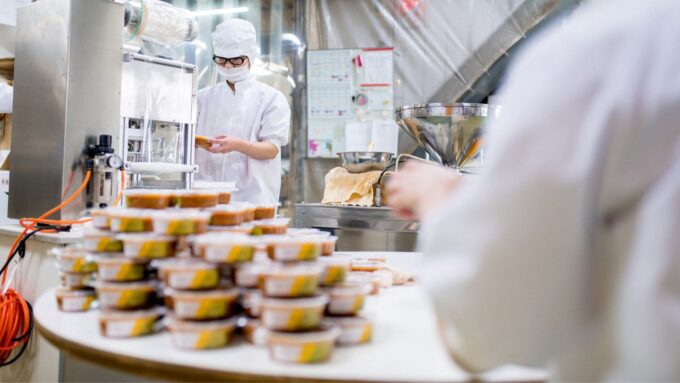Running a food business isn’t just about making great products—it’s about making them consistently, efficiently, and at a quality that keeps customers coming back. The challenge? Balancing cost, time, and quality while maintaining high standards across every batch.
From packaging to ingredient selection, small changes in operations can lead to major improvements in efficiency and product quality. If your business is looking to streamline processes, reduce waste, and elevate its offerings, these tips will help you get there.
Standardizing the Food Packaging Process Improves Efficiency

One of the biggest efficiency bottlenecks in food production is inconsistency in packaging. A poorly planned food packaging process leads to wasted time, unnecessary material costs, and storage issues. Standardizing packaging not only makes production more streamlined but also ensures that every product meets the same presentation and protection standards.
Uniform packaging reduces errors and simplifies operations, making it easier to scale production without interruptions. Choosing packaging that fits automated machinery can also significantly speed up operations while reducing labor costs. Beyond efficiency, standardized packaging enhances customer trust—when consumers see a consistent product, they associate it with reliability and professionalism.
For food businesses, reviewing and refining packaging is quick and easy to improve operations. A well-organized process cuts down on mistakes, lowers costs, and keeps production moving at an optimal pace.
Use the Best Ingredients—Quality Matters More Than Ever
Efficiency in food production isn’t just about speed—it’s about getting the right results without cutting corners. Choosing high-quality ingredients is one of the most important factors in making better food products, and when it comes to meat processing, selecting the right casings plays a huge role.
For businesses producing sausages and cured meats, using collagen casings improves both efficiency and final product quality. These casings provide uniformity in shape, better moisture retention, and durability that helps streamline processing. Unlike natural casings, collagen options are easier to handle and offer a consistent texture, making them the go-to choice for professional meat producers looking to scale up operations.
The quality of ingredients extends beyond casings. Oils, spices, and base ingredients all contribute to the final taste and texture. Businesses that prioritize sourcing premium materials often find that they reduce waste and increase customer satisfaction, leading to better reviews and repeat sales. Quality ingredients don’t just improve the product—they enhance the entire efficiency of the manufacturing process by reducing defects and inconsistencies.
The Role of Automation in Food Production

Many food businesses start with manual processes, but as demand grows, outdated methods can slow everything down. Investing in automation—whether it’s production line machinery, food prep tools, or packaging systems—can dramatically improve efficiency while maintaining quality.
Automated systems help standardize portioning, mixing, and packaging, ensuring that every batch meets the same quality standards. They also reduce human error, lower labor costs, and increase output without sacrificing precision.
Businesses that embrace automation early in their growth phase are better positioned to scale without running into bottlenecks. While automation requires an upfront investment, the long-term savings and production improvements far outweigh the costs.
Reducing Food Waste Through Smarter Planning
Food waste is a major hidden cost in the industry. Ingredients that spoil too quickly, overproduction, or inefficient portioning all contribute to unnecessary losses. Smart inventory management and production planning can significantly reduce waste and improve profitability.
Tracking ingredient usage and shelf life helps businesses order smarter and avoid excess stock that may go unused. Using technology to forecast demand based on sales trends ensures that production matches customer needs without overproducing. Businesses that actively work on waste reduction not only save money but also improve their sustainability efforts—something today’s consumers care about more than ever.
The Link Between Skilled Employees and Product Quality

No matter how advanced a production system is, the people behind it determine its success. Skilled employees who understand the manufacturing process, food safety protocols, and quality control procedures can make or break efficiency and consistency.
Training employees on proper food handling, equipment usage, and packaging techniques reduces errors and increases productivity. Well-trained staff work faster, make fewer mistakes, and can spot potential issues early on. Cross-training workers in different roles also provides flexibility, ensuring that production doesn’t slow down when someone is absent.
A business that invests in ongoing employee education creates a more capable workforce, leading to smoother operations and a higher standard of quality.
Quality Control Measures to Prevent Mistakes Before They Happen
Even the most efficient production line can suffer from errors if quality control isn’t a priority. Every batch needs to be checked for consistency, texture, packaging integrity, and compliance with food safety regulations. A strong quality control system prevents costly recalls, customer complaints, and reputational damage.
Successful food businesses implement regular checks at different stages of production, from ingredient sourcing to final packaging. Testing for consistency in taste, texture, and appearance ensures that customers get the same experience with every purchase.
Having a quality control plan in place isn’t just about catching mistakes—it’s about preventing them. When employees know what to look for, errors decrease, and overall efficiency improves.
Storage and Distribution Methods Slow You Down

A great product means nothing if it doesn’t get to customers in optimal condition. Inefficient storage and distribution can lead to delays, spoilage, and increased costs. Food businesses need to optimize logistics to ensure timely delivery and product freshness.
Cold storage management, inventory tracking, and choosing the right distribution partners all play a role in efficiency. Businesses that invest in better storage solutions reduce waste and ensure that products maintain their intended taste and texture when they reach consumers.
Improving logistics isn’t just about efficiency—it directly affects customer satisfaction. A business that consistently delivers fresh, well-packaged products on time builds a reputation for reliability and quality.
Keep up With Consumer Trends
Food trends shift quickly, and businesses that stay ahead of consumer preferences are the ones that thrive. Whether it’s the rise of plant-based products, clean-label ingredients, or demand for sustainable packaging, understanding what customers want helps businesses make smarter production decisions.
Adapting to trends early prevents overproduction of slow-moving products and allows businesses to invest in items that are gaining popularity. This proactive approach reduces waste, maximizes sales opportunities, and keeps brands relevant in an ever-changing market.
For food businesses looking to stay competitive, keeping an eye on market data and consumer behavior is just as important as improving operational efficiency.







